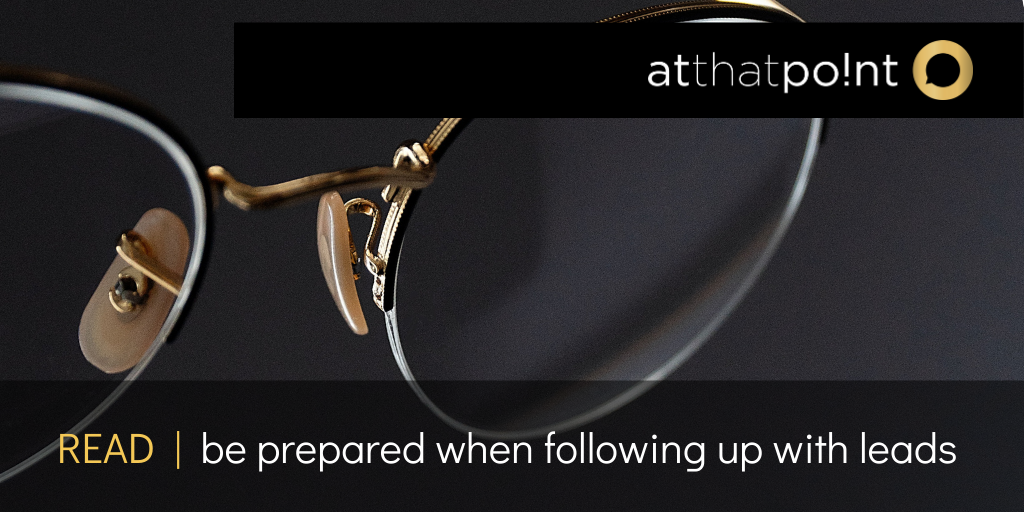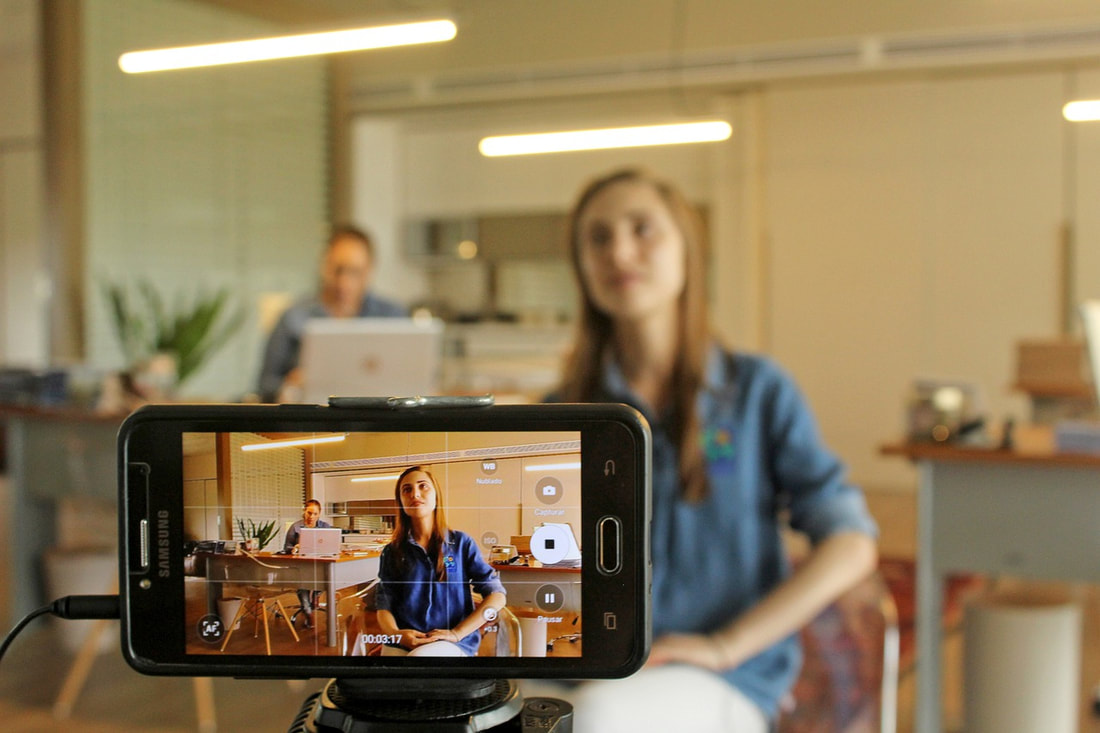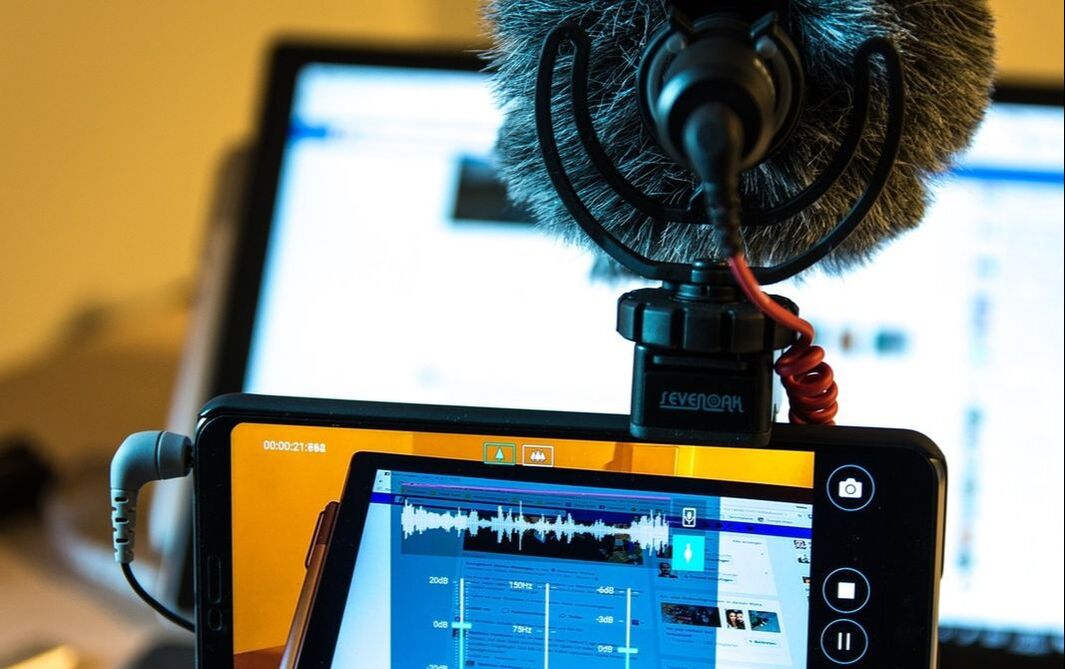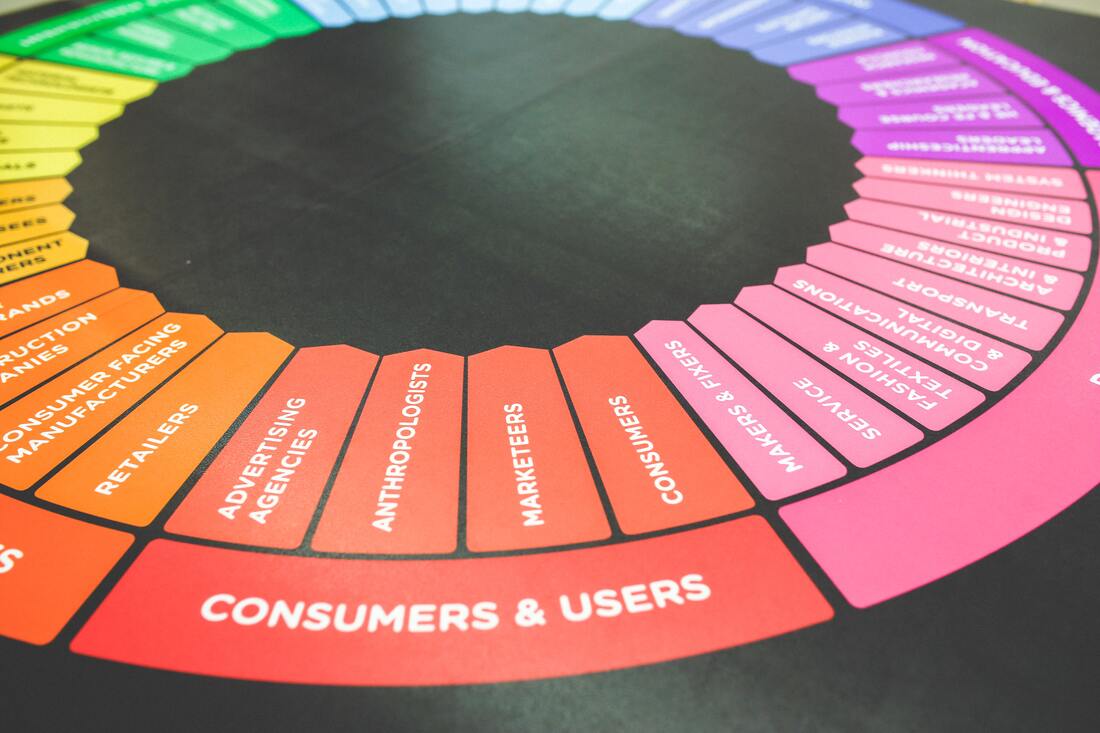 Authored by; Rosa-Mari Le Roux, Content Manager at At That Point Organisations spend countless hours on creating strategies and plans for following up with potential business leads, but often most of these efforts go to waste as organisations fail to follow through on their ideas. In order to make your strategy work, you have to follow a disciplined process with a logical set of activities. Don’t allow yourself to get swept up by small issues that will interfere with the execution of your strategy. Morris Chang once said, “Without strategy, execution is aimless. Without execution, strategy is useless.” Set clear priorities The key to a successful following-up plan, is executing each activity to the best of your ability and sticking to the plan that you set out for yourself and your team. By staying consistent and following through with activities, you create a solid structure for your workforce and yourself. Once clear priorities are established, each individual will have a clear grasp of their responsibilities, which will make execution thereof easier. Many organisations create elaborate plans and never follow through, which wastes time and cause the business to miss opportunities. Map out your follow up strategy It is essential to map out your plan when following up with leads from emails, social media or phone calls. Instead of taking a shot in the dark with your follow up call, have a script in hand, to make sure that you share the necessary information with your customer. Crafting a well thought out follow up script can go a long way. These are the five most important elements to remember when crafting your follow up plan.
Don’t skip a bullet Executing your following-up plan when it comes to potential leads is a continuous process that takes time. Don’t expect instant results, be patient and trust in your plan. Every activity should reinforce the previous one, don’t skip a bullet point. Persistence and patience are key to successful following up with leads Make time to follow up Creating a follow-up schedule will keep the process efficient and effective. This includes follow-ups on employee activities and possible customers. By staying up to date on progress and possible leads, you will create a seamless process that will start working automatically, once everyone is comfortable with their responsibilities. Collect and analyse results Develop a system for tracking and monitoring your results, in order to know whether your activities are working and worth continuing. Without analysing your data, you won’t know if you are wasting efforts on a certain activity. Make time to meet with your team, in order to evaluate their progress. These strategic meetings will also allow you to have an in-depth understanding of current activities and whether the plan needs changes or additions. I will leave you with the following quote from Naveen Jain, to inspire your future plans; “Success doesn’t necessarily come from breakthrough innovation, but from flawless execution.” Don’t miss out on a great sales opportunity by not being prepared!
0 Comments
 Authored by: Idele Prinsloo, Agency Lead, At That Point Following up blindly on potential leads for your business is not going to do anyone any favours. Not only are you running the risk of wasting your time and energy, but chances are good that you are irritating the living daylights out of those on the receiving end of your email/phone communication to check in if they might be interesting in what your company has to offer. It could be helpful to place yourself in their shoes and imagine your reaction to such efforts. So, what can you do to avoid this? Well, as with many things in life, have a plan in place. By thoroughly thinking through what kind of people/businesses you really want as clients and how you can successfully win their business, you can put together a clever following up strategy that is targeted and specified. Armed with this, you are much more likely to get positive responses, while markedly cutting down on wasted time and energy. Put them in “boxes” Before you start reaching out to potential clients, it is important to divide your leads according to categories and then tailer your messaging for each group respectively. Once-size-fits-all definitely does not apply here and will result in your leads feeling they are just being chased for their money. ThriveHive suggests keeping it simple by segmenting leads into “hot”, “warm” and “cold” according to where they stand on the sales funnel, this enables effective action to be taken. By communicating with each lead in a way that is in sync with where they currently are in the decision-making process, you show them that you are on top of your game, you go the extra mile by doing research and paying attention to detail. Slow response just as bad as no response Although knowing your potential customer’s situation will put you at an advantage, it does take time to get to that point. The risk here is that you might take too long to respond or keep on postponing it because you still have to read up to make sure you are informed. The secret is to find a balance between being in-tune with your lead and following up before they forget they ever reached out to you in the first place. Create a workflow for yourself to follow when a lead comes in, so that you can plan and make time to research them. For instance: Lead comes in, two hours later personalised response goes out… make sure you put a time limit on it (this will vary from industry to industry). By following up timeously with personalised communication that is correct in terms of the lead’s initial query, you show respect and build trust, which are fantastic building blocks for a long-term business relationship. Don’t give up easily DemandZEN says consistency is key to increasing revenue, do not just follow up once or twice. You pick up a lot from your lead through the following up process, the longer and more you interact with them, the better you can determine what their specific requirements are and how you can be of assistance. How often should you follow up and what mediums (phone or email) should I use? Well, that will vary from lead to lead, based on how busy their schedules are, as well as their business’ internal processes and cycles. Make sure you understand as much as you can about their inner workings and then decide on your following-up frequency and medium. However, the important thing to remember here is to be sensitive to their queues and take a step back before they start getting irritated with you. Make it matter Everyone is always in a hurry and has a lot to do, so when you reach out to a potential lead, make sure you do not waste their time. Have a clear notion of what you want to achieve with this specific interaction and how you will go about communicating that in spoken or written words. If you are lacking in terms of experience, having a script at hand will go a long way to help you be concise in your message. As time goes by and you get a feel for it, you will become less depended on the script. At the end of the day these are all guidelines, some of which will work for your, while others will prove to be less effective. Trying all the tips and advice you get will help you sift and carve your own way of doing to get the maximum results…just remember, having a good eye for opportunity and when to walk away comes with years of experience, there are no short cuts.  Authored by: Stephné du Toit, Content Manager at At that Point By now, we have all settled into our makeshift offices at home. We have become experts at distance communication with the help of Zoom, Teams and Skype meetings, among others. We had to “adapt or die” as they say. To adapt and not die in this new normal, we need to change our approach to marketing and communications. This means that we need to adjust our resources, communication plans and our budget over the short- and long term. Our customers’ behaviours have changed dramatically as in-person meetings, events and workshops had to be revised and replaced with other channels to reach our potential customers. For the companies that have made the leap before COVID-19 to digital environments and leaving traditional communication channels behind, riding through this pandemic storm was much easier than for others and minimised the disruption throughout their businesses. However, many companies, services and even sections in the entertainment industry that were not prepared for the shift, sadly did not make it past this pandemic. If you are still willing to adapt and swing this boat around to higher ground, we can recommend a few strategies to consider when you are adjusting your communications and marketing plan: 1. Video With smartphones in almost every customer’s hands these days, your target audience can be reached by a click of a button, or rather by pressing play on a video. Videos can be shared across multiple platforms, are easy to grasp and visually entertaining. Start off simple, use existing clips from your webinars or past event presentations and share them with your customers. Not only do you create awareness of your brand but, you also educate and provide trusted content to your audience. There are various free video editing tools online to transform a modest five minute interview into a cost effective visual communication tool. 2. Webinars and Virtual Events Even schools and Universities are now almost 100% dependent on webinars and virtual classrooms. So why should your company stay behind? This communication channel can never replace face-to-face interactions, but the recent boom in virtual platforms have created many opportunities to engage with other delegates - all in the safety of your home office. 3. Social Media Communicating through social media platforms gives you the opportunity to engage with your target audience in more than one way.
4. Content Marketing In an article titled “How To Positively Communicate With Your Audience Amidst A Pandemic”, Jagruti Bhargav, asked various marketers what content they create and post to their target market. The unanimous answer was content that is positive, hopeful, and helpful. This is a good read as to learn how messages should be structured and filled with empathy, because we are in this together, helping each other - survive, grow and shine. 5. Lead Fostering Stay in contact with your potential customers, especially during this period of economic adversity. Respect the threats to their lives and livelihoods that have altered their priorities and preferences. This can be achieved by sharing thought leader content and other valuable information through previously paid for webinars and downloadable content. Assure your potential consumers that your company’s values will remain unchanged, by clearly unpacking your values propositions. For a further read on how other companies have adjusted their communication and marketing strategies and get inspiration to help your company adapt, rather than die, I recommend reading How business adapted - COVID-19 case studies by Derek du Preez. Over the past couple of months you've most probably appeared on more videos than you've ever planned to. You've most probably also had to do it without the benefit of the knowledge of the equipment and skills that makes the video recording process a lot easier. We have good news ... the worst part is over! No amount of equipment or training can ever replace the value of the experience you've already gained. However, now that you have the experience, there are a few bits and pieces that could make your journey with video easier and more polished. To record great video you need 6 things: A RECORDING DEVICE
These days using a higher end smartphone is more than enough to record videos for communication campaigns. Even some recent full-length films were recorded entirely on smartphones! One of the reasons for recording video with your phone rather than with your laptop is that it is easier to place the phone at eye level and exactly where you want it. Experiment with making your own smartphone tripod or just buy one. The other important reason for using your smartphone rather than the webcam integrated into your laptop is resolution - the quality of the image. The resolution of an integrated webcam and the front (selfie) camera is much lower than that of the back camera of most smartphones. The image recorded by the back camera of a smartphone will therefore almost always be crisper with more balanced lighting. Using the back camera also helps to not be distracted by your own image displaying on the phone screen. If you deliver your message while looking straight into the camera lens you'll establish a great connection with your audience. If you do use either the front (selfie) camera on your phone, or the integrated webcam of you laptop, be sure to look directly into the camera lens. The same goes for online meetings ... resist the urge to look at someone's face when they're talking. Train your eye to still look into the camera and to pick on on facial cues from your peripheral vision. If your smartphone doesn't have enough memory to record you can still use you computer to record ... while using your smartphone as a virtual webcam. You can do this by downloading an app on your website and running the corresponding software on your computer. Read more about this nifty workaround. HIGH QUALITY SOUND The onboard camera of a smartphone or entry level digital camera often picks up ambient noises and sound reverberations. One way to reduce this is to use an external microphone. Whether you're using the built-in microphone of your recording device or and external camera, try to record your video in a room with lots of soft furnishings. Hard and flat surfaces bounce soundwaves around resulting in an “empty room” sound. This article is an easy read of the best type of sound dampening materials. INTENTIONAL LIGHTING Since photography and videography can be loosely defined as “painting with light”, the lighting source for your video is of utmost importance. If you're using natural light make sure it's from a window that it relatively in front of you, not at the back. This might mean that you have to play around a bit to find a spot that has both a suitable background AND suitable lighting from the front. Here's why you should do everything you can to avoid backlighting. The easiest way to get around lighting problems is to invest in a ring light. If you buy one with a smartphone holder and tripod then you've checked two boxes in one! You can also check out this nifty kit that checks even more boxes. A CAPTIVATING SCRIPT (NO REHEARSAL REQUIRED) The best videos are quick to the point and show the personality of the person on camera. From personal experience we know how hard it is to strike a balance between being personable and professional, and delivering the message in a natural manner or stiff and rehearsed. Now you can have the best of both worlds. Simply use your phone as a teleprompter! We use Speechway. Using your phone as a teleprompter might force you to use the front (selfie) camera, but by borrowing a second smartphone, and with a bit of rubberband rigging you can use one phone to record and one phone to display your script. To look like a pro when you use a teleprompter app be sure to use these tips. A teleprompter makes it MUCH easier to record your video in one smooth take, which in the end makes it a lot easier to polish the video with editing. EDITING SOFTWARE You don’t need expensive software to edit videos for communication campaign. Sometimes the video editing app already installed on your smartphone is more than enough for basic trimming and adding titles and supporting text. Alternatively there are quite a few beginner friendly online editing suites available at a reasonable fee. If you want to get a bit more serious (without spending any money) try using Hitfilm Express. SEND LARGE FILES WITH EASE Once you've recorded your video and polished it with a bit of editing it is time to get it to its intended destination. This often means that you have to send large file sizes. WeTransfer is one of the easiest ways to do this. It even has a smartphone app, but it's sometimes hard to use. Whenever we have to send large files from our phones we upload the file to Google Drive via its mobile app and the share link with the intended recipient. Let us know how this helped! Authored by: Stephné du Toit, Content Manager, at At That Point
I am a person that thrives on planning. It gives me certainty and structure, and most importantly, it keeps my crazy, creative, busy mind in order. Needless to say, it hits hard when you suddenly have to adjust all your plans, both in your work-life, as well as on a personal level. Undoubtedly, the past few weeks have brought on a tornado of adjustments, not only for our company and clients, but for most of the world! This has resulted in the challenge of figuring out how to manage adjusting plans with regards to communicating with clients, as well as clients’ communication with their customers in this current overly noisy environment. Here are a few pointers: Social According to online marketplace IZEA’s latest study, 66% of social media users believe their social media usage habits will increase significantly while confined to their homes. More people are getting accustomed to getting their information online, from news to “how to’s”, as well as catching up with friends and family. Take a moment to note the progression of online engagement trends like these and consider how they can be used to tailor your offerings according to your clients’ requirements. Your main focus should not be to profit from the COVID-19 crisis, but rather how you can add value in terms of the services you offer to your clients. Post older free resources from your website, ask them business related questions or do a poll to gather information for your company’s research projects. Webinars Should all your training and communication lock down? Absolutely not! This is the best time to pause and investigate the best ways to still meet “face-to-face” with customers. Zoom meetings are currently our go-to. Not only do we attend trainings online, we also have daily meetings with clients and our own team. Here are ten tips on how to use the Zoom app better to work, learn and communicate with others virtually https://zapier.com/blog/zoom-tips/ Chances are that most of your customers are currently being swamped by crisis emails. As we all respond differently to a crisis, it is extremely important to take note of the following:
Website Make buttons and quick links to communication visible on the front page, to allow for easy access for clients. Also update your FAQ section regularly with questions customers might have regarding your services or products. Add value, by giving customers something back. Provide them with something to read or learn and refer to older free publications, papers and training material. Keep them updated, informed and busy for time being. Thought leadership You might be a company that does not have something profound to communicate during this current news cycle, but this is nothing to worry about. Use this time to meet with your communication team to anticipate and plan for the post-crisis news cycle. Identify where you can showcase your organisation’s thought leadership. Form a “think tank”, get creative and brainstorm the potential long-term impact that this crisis might have on how your business is going to evolve, how corporate culture will evolve and how future business will be conducted. Lastly, as we all are facing new frontiers with a myriad of uncertainties, let’s stay opportunistic and see this as a time to start thinking outside the “business as usual” box that we are so accustomed to.  Authored by; Rosa-Mari Le Roux, Content Manager at At that Point They say, “If it wasn’t for the last minute, nothing would get done.” However, with an effective communication and marketing strategy in place, nothing would be left until the last minute. Your strategy should serve as a road map for your business to effectively communicate a tailored message via the right channels to reach your desired audience. My article will feature important elements to keep in mind when creating a marketing and communication strategy for your business. Bull’s eye What is the point of doing business if you don’t have a clear idea of who your customers are and what they want? Consumer insights are crucial for creating a targeted message and this valuable information can be gathered through surveys, questionnaires or interviews. Get to know your audience’s characteristics and familiarise yourself with what they read, listen to and watch. This will help you formulate your communication plan and customise your products so that it caters specifically to their desires, which should lead to better sales and happy customers. Don’t beat around the bush It is crucial to define your message, ensure that it is clear, consistent and recognisable. Keep these key points in mind when formulating your message: - Brand Identity: Your customers should be familiar with your brand identity, which must be noticeable in all marketing material and platforms. Your reader should always know it is your message. - Consistency is key: All communication and messaging should be consistent. Your company message should be communicated throughout every department within the business. - King of creativity: Be creative and unique with your ideas and messages. This will set you apart from the rest. Choose the right channels The easiest way to reach your existing audience, is to use channels where your consumers are already active, such as social media. The message that you intend to communicate should be the driving force to determine which channels you use. For instance, using video content on social media platforms rather than emails. Fortunately, there are many platforms that you can use to get in contact with your potential customer. If you know your audience, as suggested earlier, you will have a better idea on which channels you will have the most success in reaching customers. Importantly, whatever marketing channel you choose should have the same brand perception as yours. Remember “consistency is key” Keep your enemies close Lastly, know who your competitors are and what they are up to. They are probably keeping an eye on you too. The harder it is for other to duplicate what sets you apart, the better. Keep your competitors in mind when creating your strategy. This will always keep you one step ahead. To communicate without a strategy, is like walking in total darkness. You never know what might be lurking around the corner. Your strategy is your road map, your source of light, if you will. Establish marketing and communication objectives - then use industry trends to execute them29/1/2020  Authored by: Idéle Prinsloo, Agency Lead, At That Point Determining your business’ marketing and communications objectives for 2020 is central to any success you might achieve, however you run an extremely high risk of failing if your execution plan does not make provision for the important consumer and marketing trends predicted for the year ahead. Rather than taking a “head-in-the-sand” approach, use these trends as your starting point to plan your products, services, campaigns etc. This enables you to devise an effective approach that actually “speaks to the people”. According to Trend Watching there are five main consumer trends that companies need to pay serious attention to in 2020, to ensure their relevance in an increasingly competitive environment. Instead of feeling threatened, these should be regarded as promising business opportunities.
With the above in mind, set up your next internal brainstorming meeting and discuss how you can get onto the proverbial “wagon” to reap the benefits of being in sync with your customers. Marketing Trends in 2020 To give your company a further advantage, supplement your customer trend-focussed communication and marketing approach by ensuring you consider the below marketing trends that Forbes has identified for 2020:
 By Idele Prinsloo, Agency Lead, At That Point The hard work you put into your marketing and communication efforts runs a high risk of going to waste if you do not measure the effectiveness thereof continuously and thoroughly. By keeping a close eye on how these efforts are performing in terms of reception, reaction and engagement, you can detect any mistakes or inefficiencies early and correct them promptly to ensure you reach the goals you set out to. The black sheep When it comes to the content strategy of marketing and communication projects, planning, creation, promotion and analytics/measurement are the four main pillars. Each of these are critical to a successful strategy. Whatever the reason, experience has taught us that analytics/measurement is the black sheep that gets neglected most often. Should the reason be fear of the results and the lack of knowing what to do next. Please be rest assured, you do not need a qualification to pull it off. To determine the effectiveness of your content marketing efforts you can measure website traffic on a regular basis using Google Analytics, monitor the growth of your email subscriber list, subscribe to tools like Moz and SEMRush to continually monitor your search rankings, as well as gather feedback via social media updates and shares, direct messages, blog comments, emails, reviews and phone calls, just to name a few. Keep up or miss out It is however important to conduct regular marketing and communications measurement audits to make sure you are not only measuring but that you are using the right measuring tools that reveal the correct insights. When doing such audits, it is helpful to stay informed on the latest communication measurement trends. Earlier this year, at the Summit on the Future of Communications Measurement, experts agreed that a more holistic view of the value of communications is a trend that is currently becoming gradually clear. It has become about more than just measuring the accumulation of sales leads. C-suite executives are becoming increasingly interested in measuring the environmental and human impact of their businesses. Communications will be at the centre of building or rebuilding trust, which has become a scares commodity. To state it bluntly, the business world’s priorities, focus areas and way of operating is changing and measurement must keep up. According to business2community.com walls between PR, social media marketing, advertising and digital marketing are crumbling as communications professionals recognise the benefits of integrating PR and marketing functions. Companies have come to learn that integrated communications, results in a consistent message and voice across all channels of communication, which leads to more efficient allocation of resources and more agile organisations that are capable of quicker reactions. Industry experts therefore anticipate that all marketing and PR measurement of earned, owned, paid and social media will, over the next four years, be integrated into a single online dashboard that can be tweaked according to different department needs. The bottom line is; to continuously evolve and update your marketing and communication measurement tools and approaches to avoid getting left behind and missing out on great success.  Authored by: Stephné du Toit, Content Manager, At That Point Do your marketing meetings usually include a discussion around how you should be doing more video on your social media platforms? Then a month goes by and you still haven’t managed to get a single video done? Like they say, procrastination is the thief of all things. This is usually because the process of making a video seems like a daunting task to the average person. However, it does not have to be a difficult or expensive exercise, you can therefor stop hesitating and get started. The easiest way to do this is to start at the beginning and methodically work your way through the production process. Here are some simple steps to get you going, and before you know it, it will become second nature. Planning Get your team around the table, and if you do not have a team, get some of your creative employees to form part of your brainstorming session. Ask yourselves, what do we want to achieve? What are the actions we want to stem from this video? Who do we want to reach with our message? Here you must set a definitive aim, if you shoot too broadly, you are going to miss your target. Now you can start writing, plan your setting and create a storyboard to plot the scenes or message points of you video. Type of video Depending on your message, you have to decide if you will be using an articulate person to convey the message, or if you would just like to use text to elevate your main points of your message. Either way, there are a lot of free stock image and video sites on the internet where you can source great visuals to support your message Also make sure your speaker is prepped, relaxed and as natural as possible. Remember, the whole video does not have to be done in one shot. Keep your segments short, this will make it easy to cut and edit. 1…2…3 Action! Plan your video set well in advance. Make sure to focus on the small things – those that can make or break your video, such as:
Round off with some editing No, you do not have to be a professional to edit your video. There are a lot of free and easy movie editing software online. Make sure to cut the unwanted content, use transitions to switch between scenes and add a bit of background music to create your desired mood. Do not forget to add your company logo and have a call to action at the end, even if you are just inviting your audience to visit your website for more information. Go live! The most important thing to remember when you create and post social media video, is to keep it sweet and short. Your aim is not to make a blockbuster movie, but rather to give a targeted message to a specific audience regarding your services, product or business. You therefor best keep to a one- to two-minute video, at the most. Then upload your video to your website or YouTube channel that you created for your business. From there, you can link back to your video by posting a short description and link onto your various social media platforms. Remember practice makes perfect! If you just start and keep going you will soon wonder how you ever communicated to your audience without video. By Rosa-Mari Le Roux, Content Manager, www.atthatpoint.co.za I have come to realise that the success of your content lies in the targeted distribution thereof. The first step of your content creation process should be to determine how and where to publish your content, a sound distribution plan is therefore equally as important as the content that you create. Here are five tips to follow when planning the distribution of your content. Research before you release Content distribution is all about reaching the right audience. Research your target audience before building your distribution strategy. Start by collecting data from your website and social media followers. Their age, gender, location and other related categories should be available on google analytics or on your social media platform analytic tools. You can further collect feedback directly from your existing customers and followers. By asking them about their preferences for receiving communication, you will get a better idea of which platform and format to use in future. This information will form the golden thread of your content creation and distribution plan. The important R’s Once the content has been created you can reuse and repurpose it on various platforms. Let’s say you released a blog post on “Graphic Design 101”; this content might also work for a webinar or even a short YouTube video that your audience can watch if they don’t want to read an article on the topic. Other platforms that your content can be repurposed on include podcasts, videos and social media posts that will reach and grow new audiences for your business. You have already done the work, now use it to its full potential. The art of sharing There is no use in creating content that no one wants to share. Make sure that your content is interesting, easy to read and understandable. Don’t try to sound like an intellectual mastermind, rather package your knowledge in a way that others can relate to. You will do no one any favour by making someone feel inferior when reading your work. Making content sharable also means to make it accessible on all platforms such as Facebook, Instagram & LinkedIn, to name just a few. By allowing your audience to share your content on multiple platforms, you are reaching readers that you may never have found otherwise. Social media is a wonderful tool if you know how to use it to your advantage. By understanding the art of making your content shareable, means less work and more marketing for you. Rome wasn't built in a day Test all distribution channels on a continuous basis. Your content might not reach the desired audience on the first try, but people and their interests evolve. Constant attempts to find additional channels may help grow your audience faster and more effectively. Each content type has their own audience, by using different platforms you will certainly reach a wider audience than usual. After distributing your content on numerous platforms, collect the results and measure it against your audience engagement and feedback. This will give you further insight into what your audience likes to read, listen or watch. Barking up the wrong tree Now that you have researched your audience, decided on distribution platforms and created shareable content, you must make sure that you are not barking up the wrong tree. After distributing your content, analyse and measure your results. Choose a routine time (weekly) to monitor your website visits and your social media following, also follow comments and number of shares on your content. This will help you to set a goal for the following distribution cycle. Finally, trust in your audience. If you are as connected to your audience as you should be, they will guide you in the right direction to create the perfect content for them. If you start your distribution process with these five tips, you should end up with the perfect recipe for delivering your content to the desired audience. |
Archives
November 2020
Categories
All
|




 RSS Feed
RSS Feed